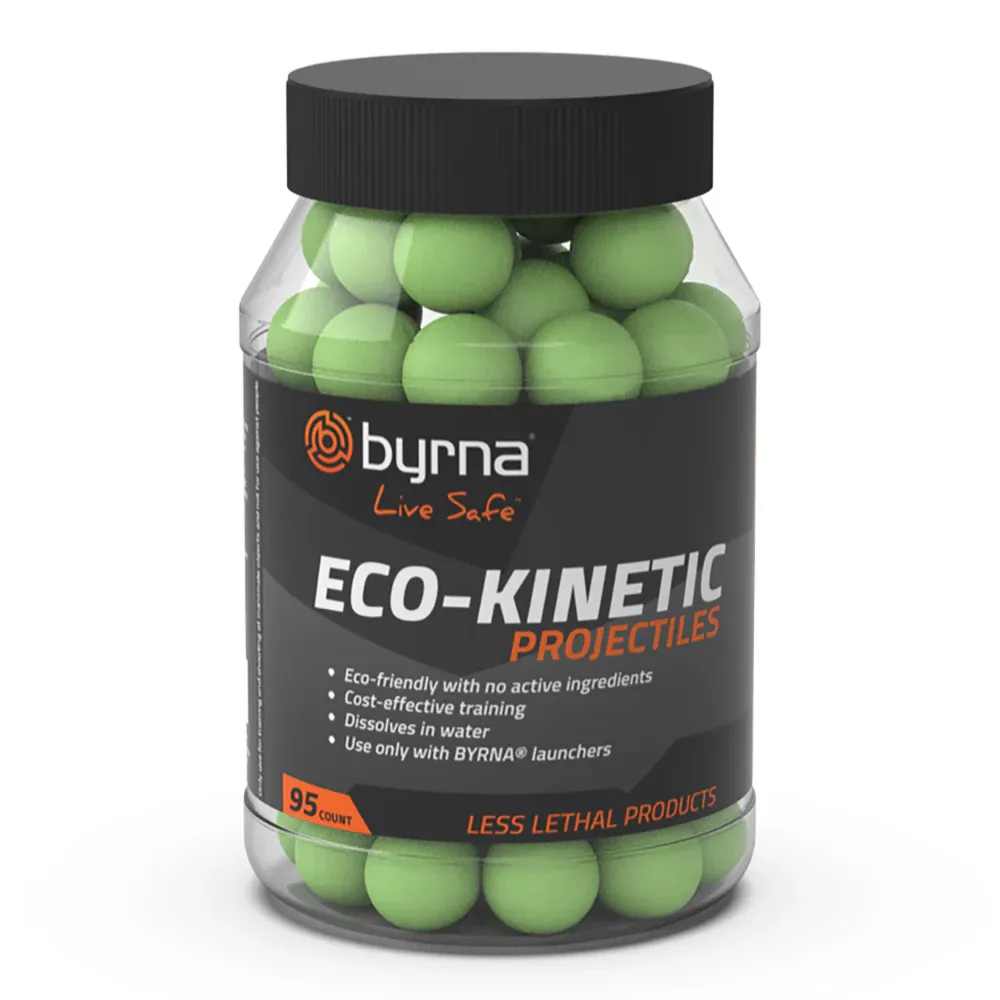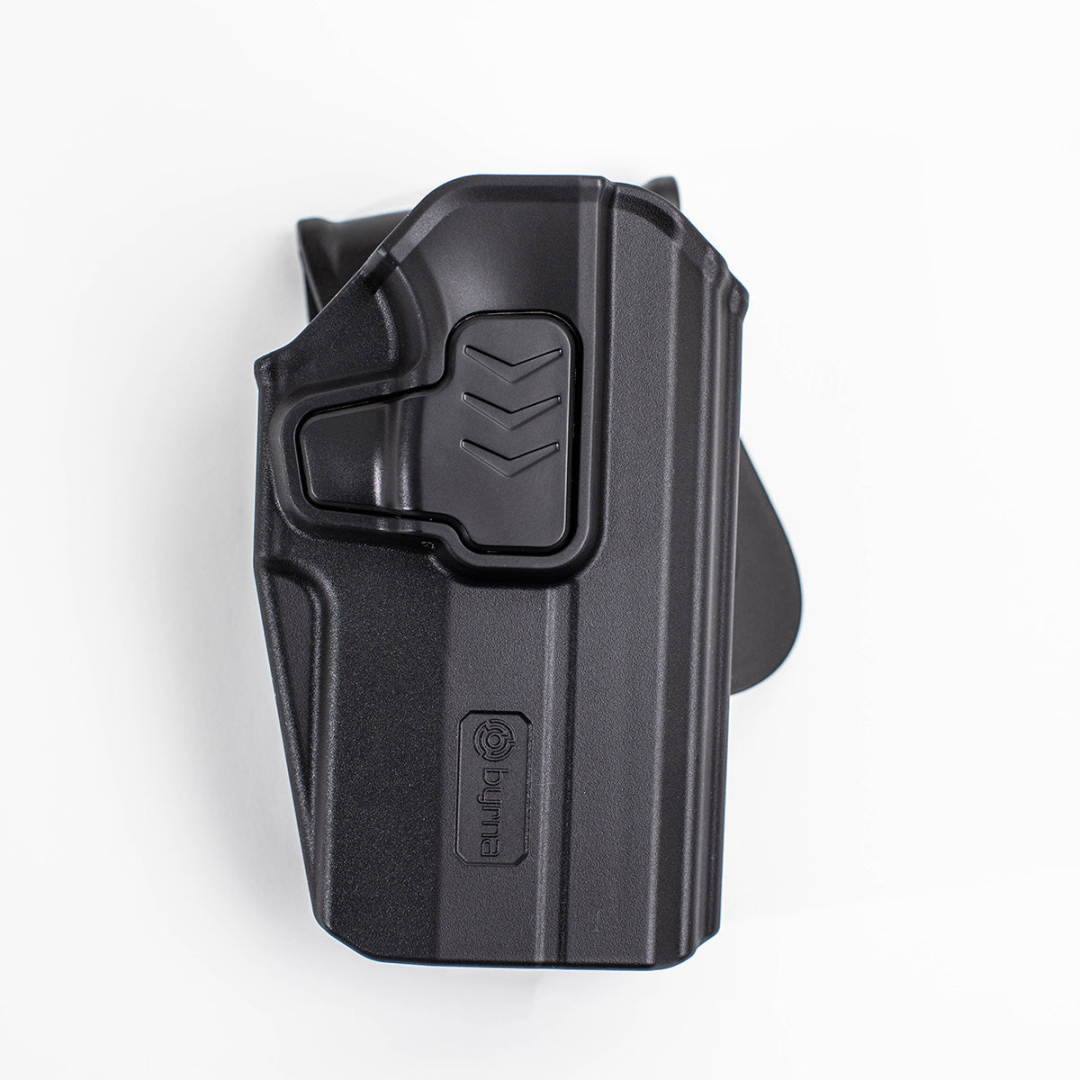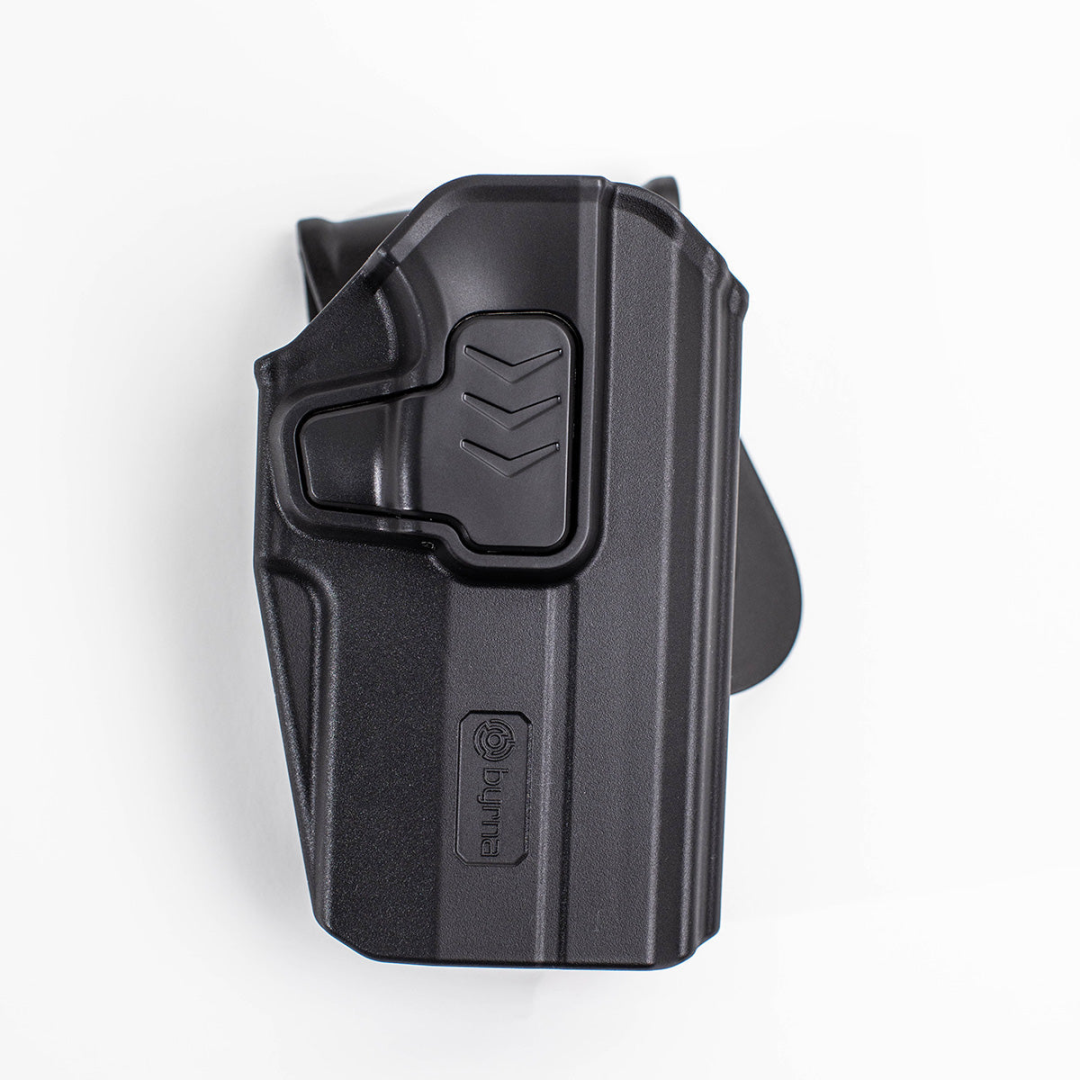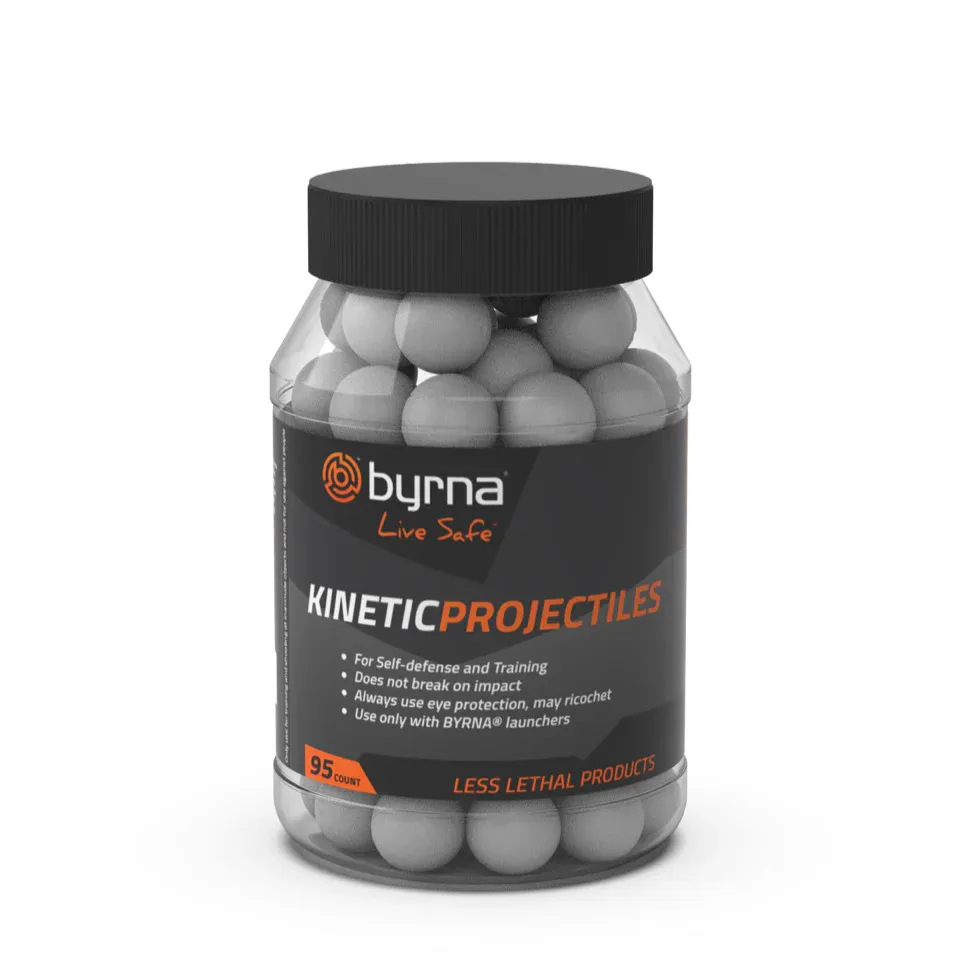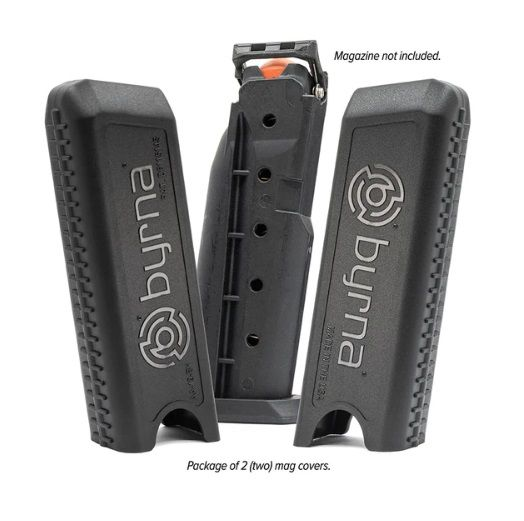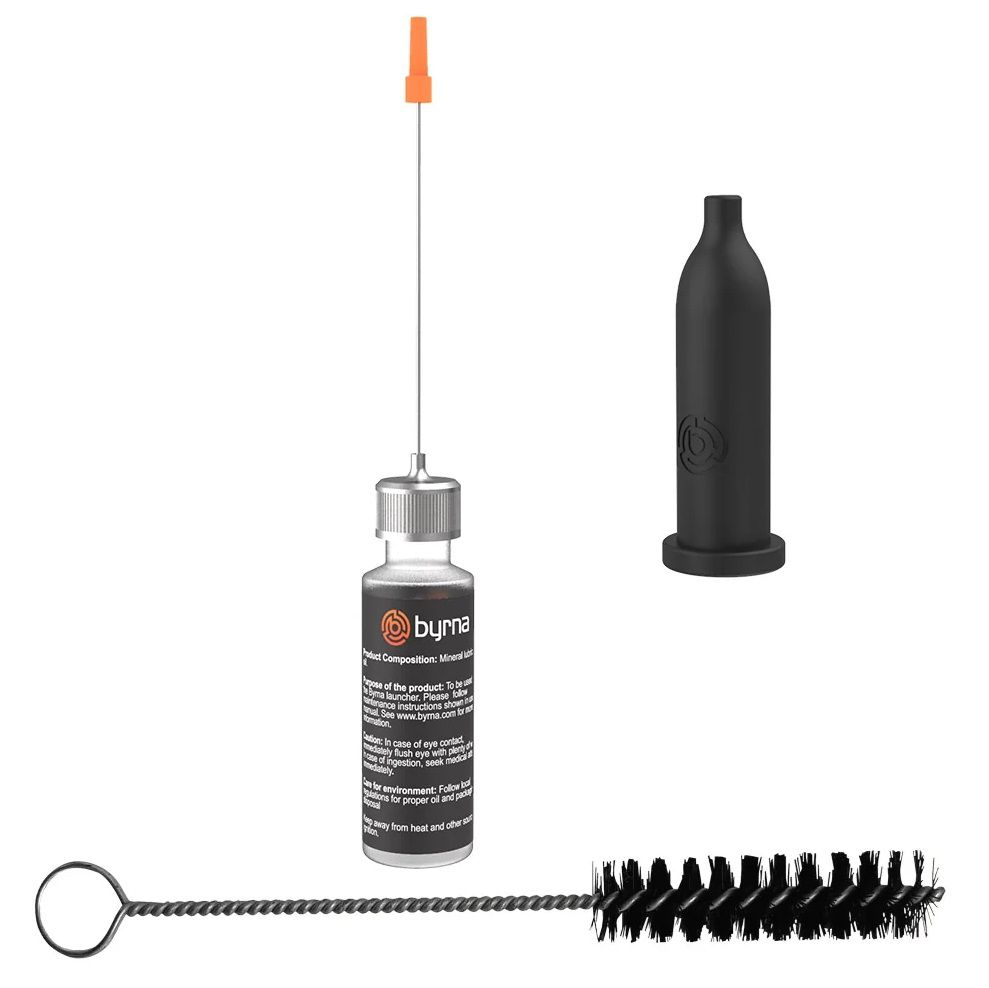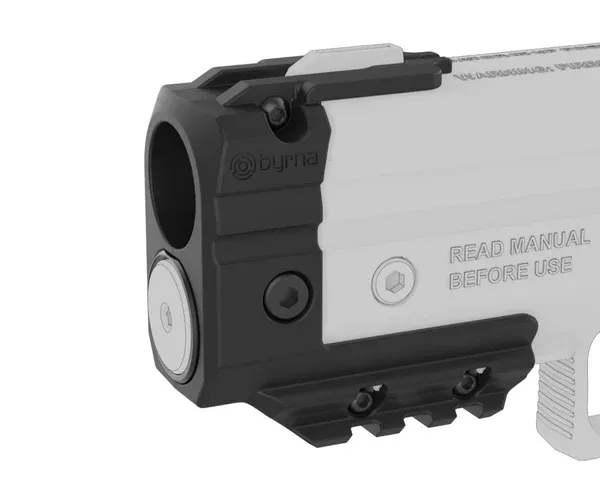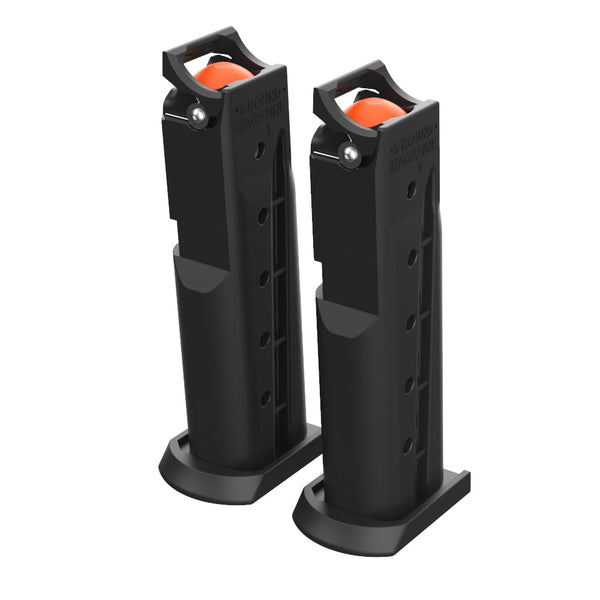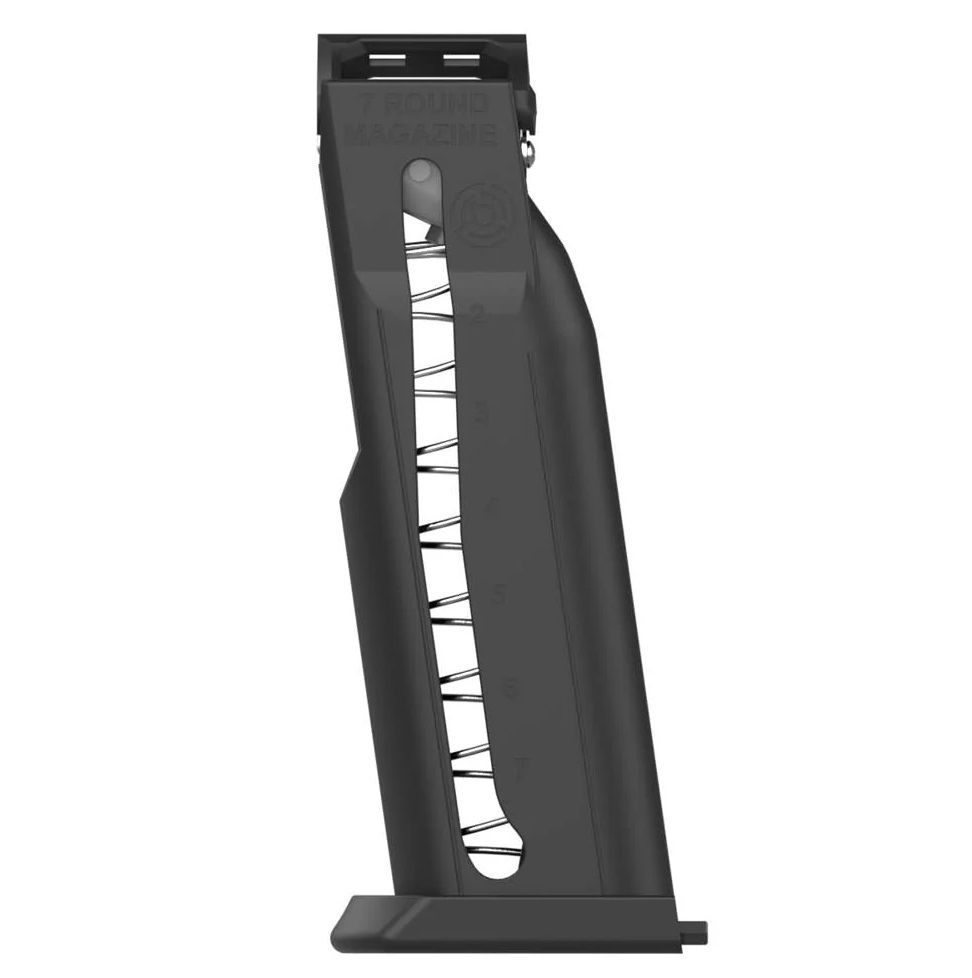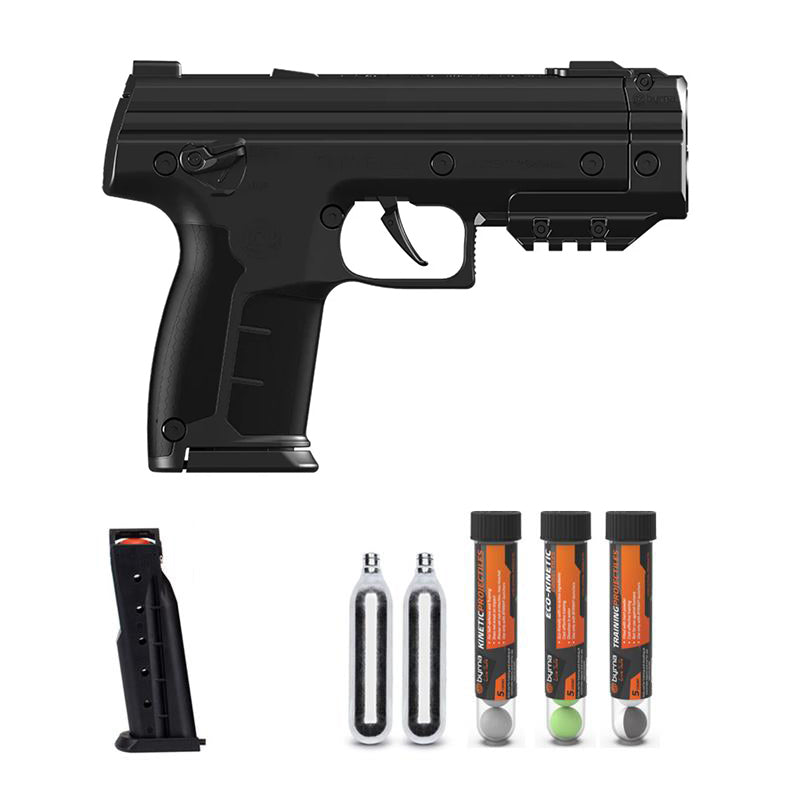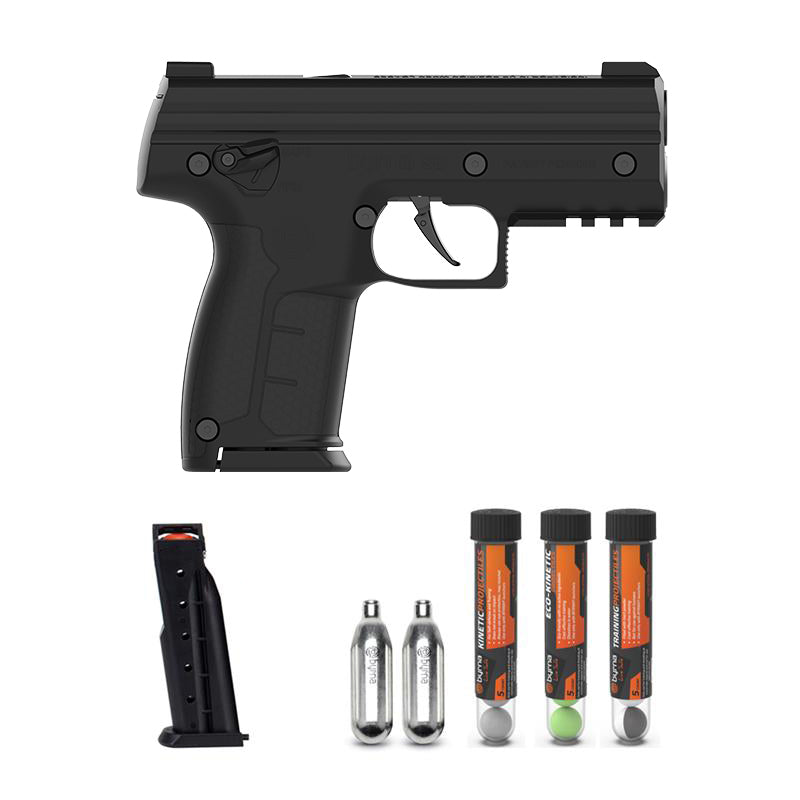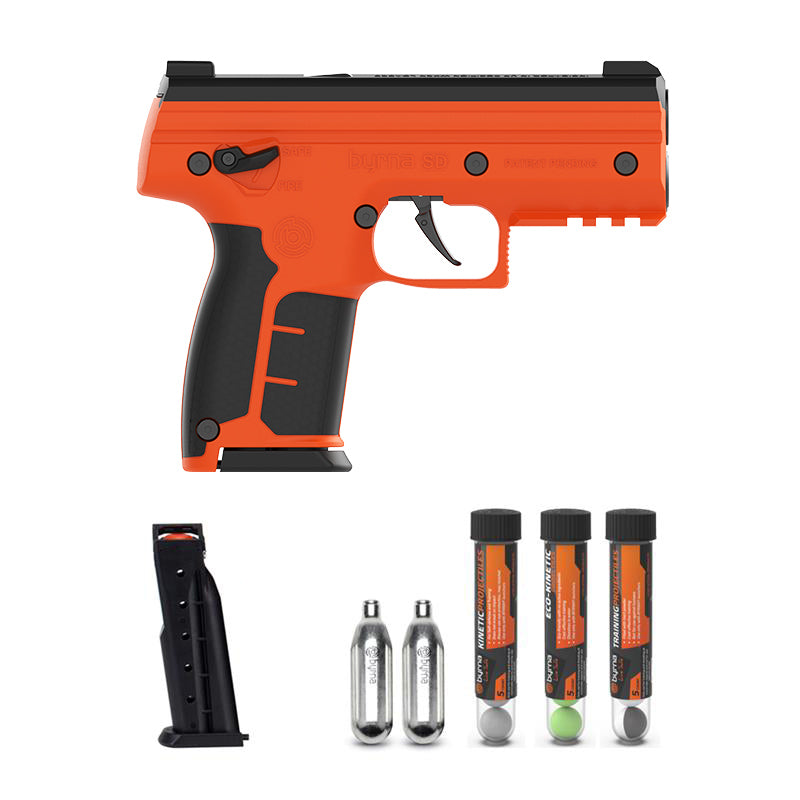All about Air Rifles - The Complete Guide for Beginners and Advanced Gun Owners
Welcome to our ultimate guide to air rifles! Whether you are new to air rifles or already an experienced shooter, here you will find all the information you need to make the right choice when buying an air rifle. From operation and legal rules to the different types of air rifles, their applications and their pellets. Those who have never owned an air rifle before will be full of questions. And even if you already have an air rifle at home, there is so much more information to glean about air rifles. Read on and find out everything you need to know to make a good decision and enjoy your air rifle to the fullest.
We have put all this information on this page and on the pages below, so that you can find everything there is to learn about airguns. A kind of airgun wiki, full of reliable information. With this knowledge, you will certainly be able to make an informed choice among the air rifles we have for sale. And of course, it's all just very interesting reading, too.
What is an Airgun and how does it work? - The basic explanation
An air rifle is a weapon that uses air pressure to shoot out a pellet through a barrel. This type of weapon is also called an air rifle, airgun, rifle, air pressure rifle or windgun. The major difference with firearms is that no explosive material such as gunpowder is used to fire the bullet. Instead, air pressure is built up that propels the projectile through the barrel.
The power of an air rifle is expressed in joules (J). The more joules, the more powerful the shot. The way air pressure is built up varies for each type of air rifle. The most common types are:
Spring rifles
The spring rifle is one of the most traditional and popular types of air rifles still used by many shooters today. The principle behind a spring box is relatively simple, but at the same time ingenious. Basically, it uses a powerful metal spring that, when tensioned, stores energy that is later converted into a powerful shot.
How exactly does a spring rifle work?
In a spring rifle, there is a piston in a cylinder that is pressed against the pressure of a spring. This tensioning can take place in different ways, depending on the specific type of spring rifle. The most common system is the articulated barrel, where you fold down the barrel until it engages in the tensioned position. This process compresses the spring and tightens the piston, ready to release its power as soon as the trigger is pulled.
However, there are other methods of tensioning a spring rifle. There are models with underspanners or side tensioners. With an underspanner, the tensioning lever is usually under the barrel and is pulled backwards to tension the spring. With a side tensioner, a lever on the side of the weapon is used to perform the same action. Both systems have the advantage of keeping the barrel fixed, which can improve accuracy.
The firing mechanism
When you pull the trigger, the tensioned piston is released. The spring forcefully pushes the piston forward through the cylinder, suddenly compressing the air in the cylinder strongly. This compressed air is passed through a small opening, known as the breech, into the barrel at high velocity. The airgun pellet inside the barrel is propelled outwards by this air pressure.
Tensioning and shooting - The different methods
As mentioned earlier, there are several ways to cock a spring rifle. The articulated barrel is by far the most common and popular method because of its simplicity and efficiency. However, underspanners and side tensioners are often praised for their sturdiness and consistency, as the barrel in these models does not move during tensioning. This ensures that the barrel always remains tight and precise, which contributes to better accuracy during shooting.
Why choose a spring rifle?
The spring rifle is often considered the most versatile air rifle, suitable for both recreational shooting and competitions. For beginners, the simplicity and robustness of a spring rifle offers an ideal introduction to the airgun world. They are reliable, mechanically simple and relatively affordable. In addition, many shooters experience the typical 'twang' sound released when releasing a shot as a nostalgic and pleasant aspect of the experience.
For the more advanced shooter, high-end spring rifles are available that are exceptionally accurate and meet the highest requirements for competitive shooting. Especially for disciplines such as Field Target (FT) and Hunter Field Target (HFT), there are specialised models designed for maximum precision.
Kickback and Noise
A key feature of a spring rifle is recoil. This is caused by the sudden release of the tensioned spring, causing a slight shock when the shot is released. For some shooters, this is a disadvantage, especially when extreme precision is required. For others, on the contrary, it is an essential part of the charm of a spring rifle. The sound of the spring relaxing - often described as a 'twang' - is a feature that adds to the authentic feel of shooting with a spring rifle.
Gasrambuks
The gas ram rifle is a popular alternative to the classic spring rifle, mainly because of its advantages in terms of shooting comfort, accuracy and durability. Although this type of air rifle is very similar to the spring rifle, there is one important difference: the use of a gas spring instead of a traditional metal spring.
The operation of a Gas ram gun
In a gas ram gun, the energy required to fire an air rifle pellet is not stored in a metal spring, but in a sealed cylinder filled with compressed gas. Nitrogen is usually used for this purpose, as it is more stable than ordinary air. The system works as follows:
During tensioning, the gas spring is compressed by a lever mechanism, such as an articulated barrel, under tensioner or side tensioner.
Compressing the gas spring increases the pressure in the cylinder. This process is very similar to the compression of a gas spring found, for example, in the tailgate of a car.
When the trigger is pulled, the gas spring comes forward in one smooth motion. This action creates a powerful air pressure that propels the bullet through the barrel.
Unlike a traditional spring rifle, which works with a metal spring that is compressed, the gas spring provides a much smoother and more consistent shot. The system is designed to completely eliminate the loss of energy due to friction and torsion (twisting of the spring during compression).
Why choose a Gasrambuks?
Using a gas spring instead of a metal spring offers several distinct advantages. One of the biggest advantages is the consistent shooting experience. Whereas a metal spring can weaken over time or cause irregular vibrations, a gas spring offers extremely stable and reliable shooting power.
In addition, a gas ram rifle is whisper quiet compared to a traditional spring rifle. Because there is no metal-to-metal contact that causes a 'twang', the noise during shooting is limited to the sound of air being forced through the barrel. This makes a gas ram rifle very suitable for situations where noise can be a problem.
Furthermore, gas ram guns are also more low-maintenance. Whereas a metal spring can weaken due to wear or prolonged compression, a gas spring generally remains effective for much longer. This ensures that a gas ram gun retains its full power for longer and is less likely to need replacing.
Different tensioning methods at Gasrambuks
Gas ram rifles can be tensioned via various mechanisms, just like traditional spring rifles. The most common ways to tension a gas spring are:
Articulated barrel: In which the barrel itself is bent to compress the gas spring.
Underspanner: A lever under the barrel that is pulled back to tension the spring.
Side tensioner: A lever on the side of the weapon, usually used on models that have a fixed barrel for greater accuracy.
The advantage of these systems is that they offer versatility in use, without affecting the operation of the gas spring itself. Which method is most suitable often depends on personal preference and the specific model being used.
Application and Performance of a Gas ram gun
The gas ramrod rifle is widely praised for its versatility. It is ideal for recreational shooting in the garden, where precision is not always the top priority, but comfort and ease of use are important. With the lack of annoying vibrations normally associated with metal springs, a gas ramgun offers a much more stable shooting experience.
Moreover, the better gas ram rifles are also ideally suited to sport shooting disciplines. Competitive shooters appreciate the reliability and consistency of the gas ram system. Especially in disciplines where repeatability and accuracy are essential, such as Field Target (FT) and Hunter Field Target (HFT), the gas ram rifle comes into its own.
Summary: The advantages of a Gasram rifle
Consistent performance: No torsion effects as with metal springs, resulting in more stable ball flight.
Quiet shooting: Due to the lack of metal vibrations, a gas ram rifle is considerably quieter than a traditional spring rifle.
Durability: The gas spring retains its strength and efficiency longer than a metal spring.
Versatile: Suitable for both recreational shooting and sporting competitions.
A gas ram gun is an excellent choice for shooters who value a smooth and quiet shooting experience, without sacrificing power or accuracy.
PCP air rifles (Pre-Charged Pneumatics)
The PCP Rifle, also known as Pre-Charged Pneumatics or compressed air rifle, is a type of air rifle known for its impressive power and high precision. What is special about this system is that the energy source is not a spring or gas spring, but compressed air stored in a special reservoir. This innovative system ensures that PCP air rifles excel in power, accuracy and ease of use.
How does a PCP air rifle work?
Unlike traditional spring or gas ram rifles, which derive their power from a mechanical tensioning system, a PCP air rifle works with a reservoir filled with compressed air. This compressed air is stored at very high pressure, usually ranging from 200 to 300 bar.
Firing a shot is done in a special way:
Filling the Reservoir: Before a PCP air rifle can be used, the reservoir must be filled with compressed air. This can be done using a hand pump, a compressed air bottle (such as a scuba tank) or a special compressor.
The Mechanism: When the trigger is pulled, a small hammer mechanism is activated that briefly opens a valve. This valve releases a precise amount of compressed air from the reservoir, which is then passed through the barrel.
Driving the Bullet: The released air propels the bullet out through the barrel at high speed. The greater the air pressure in the reservoir, the more powerful the shot will be.
Advantages of a PCP air rifle
PCP air rifles are considered the powerhouses among air rifles, and for good reason. Its advantages are numerous:
Huge Power: Compared to other types of air rifles, PCP models are unrivalled when it comes to power. They can reach powers of up to 1,000 joules, making them by far the most powerful unlicensed air rifles.
Accuracy: Because PCP air rifles have virtually no recoil, the accuracy of these models is exceptional. This makes them ideally suited for long-range shooting and competitions such as 100-metre shooting.
Ease of use: The lack of a mechanical tensioning system means that no physical force is needed to load the rifle. All you have to do is insert a pellet or reload the rifle from a magazine.
Silence at Shooting: Although PCP air rifles are more powerful than other air rifles, they are relatively quiet during firing. This is because the mechanism has no moving metal parts such as a spring that relaxes.
High shot rate: Because the system uses a large reservoir of compressed air, several shots can be fired in quick succession without re-tensioning.
How do you fill a PCP air rifle?
Filling a PCP air rifle is an essential part of using it. Since compressed air is the power source, it should always be refilled properly. There are several ways to supply compressed air to a PCP air rifle:
Hand pump: A hand pump specifically designed for PCP air rifles is an affordable option, but filling it often takes more time and physical effort. Especially for rifles with a large reservoir, this can be quite intensive.
Compressed air bottle: The most common method is to use a large compressed air bottle, such as a scuba tank. This is often filled at a specialist shop or dive shop. The air is transferred to the air rifle's reservoir via a filling adapter.
Compressor: An electric compressor offers the ultimate in convenience. The device is capable of filling the air rifle to the desired pressure quickly and efficiently. This is especially useful for people who shoot their PCP air rifle regularly.
In our shop, we always fill compressed air bottles with special dehumidified air. This prevents corrosion and significantly extends the service life of your PCP air rifle.
Applications of a PCP air rifle
The unique features of PCP air rifles make them suitable for a variety of purposes. Whether you are looking for a rifle for recreational use, competitive shooting or even hunting (where allowed), a PCP air rifle offers unmatched versatility.
Competitive Shooting: Especially in long-distance shooting, such as 100-metre competitions, PCP air rifles are praised for their stability and power.
Recreational Shooting: For those who just want to plink away in the backyard, a PCP air rifle offers a fun and powerful experience, provided the terrain is large enough to shoot safely.
Hunting: In some countries, it is legal to hunt or damage control game with PCP air rifles. The powerful shots and precision make them very suitable for this application.
Are PCP Air Rifles the Best Air Rifles?
When it comes to sheer power, precision and versatility, PCP air rifles are absolutely at the top. They offer a shooting experience that cannot be compared to any other system. The only downside is that they rely on an external air source, which means you always need access to a compressed air bottle or compressor. But once that is taken care of, PCP air rifles offer the ultimate experience for both recreational and professional shooters.
CO2 air rifles
CO2 air rifles are a popular choice among shooters looking for a simple and easy-to-use system intended mainly for recreational shooting. This type of air rifle uses CO2 gas as the propellant to shoot projectiles through the barrel at a reasonable speed. Although it CO2 pistol cannot compete with PCP air rifles in terms of power, they do offer several advantages that make them very attractive to both novice and experienced shooters.
How does a CO2 air rifle work?
The principle of a CO2 air rifle is relatively simple and very effective. Instead of using compressed air introduced through a pump or compressor, a CO2 air rifle works with CO2 cartridges or capsules. These are usually available in standard sizes such as 12g or 88g cartridges.
The process is as follows:
Inserting the CO2 capsule: The capsule is placed in a special compartment of the air rifle and pierced by a mechanism to release the gas.
Gas release: When the trigger is pulled, a valve is opened, releasing a small amount of CO2 gas into the barrel.
Driving the Bullet: The released CO2 gas suddenly expands and propels the air rifle pellet out through the barrel with considerable speed.
Repeated Shots: For an air rifle with magazine, the system can fire several times in a row without having to replace the capsule immediately.
Advantages of CO2 air rifles
While CO2 air rifles are not the most powerful air rifles on the market, they do offer unique advantages that make them an excellent choice for certain applications.
Easy to use: Replacing a CO2 cartridge is quick and easy. No external equipment such as a pump or compressor is needed.
Smooth Shooting Experience: Because the system does not use springs or pumps, there is virtually no recoil. This makes shooting a CO2 air rifle very comfortable and enjoyable.
Relatively Quiet: Because the system contains no mechanical springs that produce noise, CO2 air rifles tend to be quieter than spring or gas ram rifles.
High Rate of Fire: Many CO2 air rifles come with a magazine system, which means that multiple shots can be fired in quick succession without having to reload or cock up each time.
Affordability: CO2 air rifles are generally cheaper than PCP systems and require less expensive accessories. All you need are replaceable CO2 cartridges.
Limitations of CO2 air rifles
Despite its many advantages, CO2 air rifles also have some limitations that need to be taken into account.
Limited Power: Compared to PCP air rifles, CO2 air rifles are considerably less powerful. They usually achieve a power comparable to light spring rifles. They are therefore less suitable for serious long-range shooting or competitions.
Temperature sensitivity: The performance of CO2 air rifles is strongly influenced by the ambient temperature. In cold weather, the pressure in the CO2 capsule decreases, resulting in lower firepower and less consistent shots.
Higher Long-Term Cost: Although buying a CO2 air rifle is relatively cheap, the cost of CO2 cartridges can add up with intensive use. This makes it more expensive in the long run than a compressed air system that can be refilled.
What are CO2 air rifles suitable for?
CO2 air rifles are mainly used for recreational shooting, such as backyard plinking or target shooting at short- to medium-range targets. Thanks to their easy handling and user-friendly nature, they are also popular among novice shooters looking for an air rifle without complicated pumping systems or powerful recoil behaviour.
For sports shooters who prefer a quiet, relaxed shooting experience, without the hassle of manually tensioning springs or filling compressed air bottles, CO2 air rifles are an excellent choice. In addition, many CO2 air rifles are equipped with magazine systems, making it possible to shoot in quick succession without reloading each time.
Are CO2 air rifles a Good Choice?
Whether a CO2 air rifle is right for you depends entirely on your personal preferences and the purpose for which you want to use it. If you are looking for an air rifle that is easy to use, without the hassle of pumps or compressed air bottles, a CO2 air rifle offers a great solution.
However, it is important to remember that CO2 air rifles are less powerful than their PCP counterparts. For long-range shooting or use in colder conditions, they are less suitable. But for relaxed shooting at short distances, they are ideal.
Summary: Why choose a CO2 air rifle?
User-friendliness: Simple operation without complicated systems.
Affordability: Suitable for any budget due to its low purchase price.
Suitable for Beginners: Low recoil and easy to handle.
Less Suitable for Long Distances: Strength and consistency are limited compared to other air bumps.
With the right expectations, a CO2 air rifle offers a highly enjoyable shooting experience, ideal for recreational use and light sporting applications.
Pump guns
Pump guns are a piece of air rifle history that is still loved by a specific group of shooters. This type of air rifle uses a completely manual system to build up air pressure. Whereas modern systems such as PCP air rifles use an external reservoir filled with compressed air, in a pump rifle the pressure is built up by pure muscle power.
Although less popular than PCPs or gas ram guns these days, pump guns still have their own charm and advantages. They are especially appreciated for their nostalgic character, ease of use and the ability to fully control the shooting power.
How Does a Pump Gun Work?
The principle behind a pump shotgun is quite simple but effective. The air rifle has an internal cylinder that is filled with compressed air by a pumping mechanism. This mechanism can be an articulated barrel, where the barrel is bent downwards, or a separate lever that is moved back and forth.
The process is as follows:
Manual Air Assembly: The pumping motion compresses air and directs it into the reservoir. The more often you pump, the higher the air pressure in the reservoir becomes.
Storage in a Reservoir: The accumulated air is stored until the trigger is pulled.
Releasing Air: Upon pulling the trigger, a valve is opened, allowing compressed air to pass through the barrel and forcefully fire the projectile.
This form of pressure build-up is entirely manual, meaning you don't need external equipment such as compressors or CO2 capsules. This makes pump guns relatively cheap and low-maintenance.
Advantages of pump guns
Although pump guns are not used as often as their modern counterparts today, they still offer some unique advantages:
Full Control over Shooting Power: Because you control how much air you compress, you have direct control over the power of the shot. For close shooting, use fewer pump strokes, while for longer distances or more power you can apply more strokes.
No External Equipment Needed: Unlike PCP air rifles, you don't need to bring compressed air bottles or compressors. Everything you need is built into the air rifle itself.
Affordability: Pump guns are generally cheaper than modern systems such as PCP air rifles, especially in the long term.
Nostalgic Value: Many shooters who have been in the world of air rifles for some time remember the classic pump-action rifles from brands such as Sheridan. The feeling of building the power themselves remains an attractive aspect for many.
Limitations of pump guns
Despite their advantages, there are also some drawbacks to pump guns, which have made them increasingly unpopular:
Labour-intensive: Continuous pumping can be tiring, especially when you want to reach higher power levels. This makes them less suitable for prolonged shooting sessions.
Limited Power: Even when you build up maximum pressure, pump guns usually cannot compete with the power of a PCP air rifle. Indeed, PCPs can reach air pressure levels that are impossible with manual pumping.
Slow Fire Cadence: After each shot, the rifle has to be re-pumped, which significantly reduces the rate of fire. This makes pump rifles less practical for use in competitions or hunting, where speed and consistency are important.
Prone to Wear: Constant pumping can lead to wear of the internal seals over time, especially with intensive use.
What are Pump Guns Suitable for?
Pump guns are ideally suited for recreational shooting and shorter distances. They are popular with shooters who like to determine their own shooting power and enjoy the mechanical experience of pumping. Pump guns are also an interesting choice for younger shooters or beginners who want to experiment with air rifles without immediately investing in expensive accessories.
In addition, they are sometimes bought out of sheer nostalgia. Many older shooters look back fondly on the days when they had their first air rifle - often a simple pump rifle - with which they tried to shoot through as many layers of wood as possible. The fact that you can control the pressure yourself remains a fun and attractive feature for many.
Why choose a pump shotgun?
Although they cannot compete with modern systems such as PCP air rifles in terms of power and consistency, the pump rifle retains a unique place in the world of air guns. Their simple operation, low cost and complete independence from external devices make them attractive to a specific group of shooters.
Moreover, using a pump shotgun can offer a fun, old-school experience that you won't easily find with modern air rifles. The charm of pumping, determining the force and immediately feeling the result after a shot, gives pump guns a special place in the hearts of many shooters.
Innovation and Shooting Speed in one System
While classic air rifles revolved around manual loading systems such as the articulated barrel for many years, modern techniques have led to impressive innovations in air guns. One of these innovations is the introduction of magazine air rifles. This type of air rifle offers a much more efficient and faster way of shooting, making it popular among both recreational and serious shooters.
What is an Air Rifle with Magazine?
An air rifle with magazine differs substantially from traditional models that required you to manually load a new pellet after each shot. Instead, an air rifle with magazine uses a system that holds several pellets at once and reloads them automatically after each shot.
Although manual rifle cocking is still sometimes required, reloading ammunition becomes a fully automatic operation. This means you are ready to fire again in a split second. This makes it possible to fire in quicker succession, which is a big advantage for many shooters.
How Does a Warehouse System Work?
For air rifles with magazine, the mechanism is usually driven by a PCP or CO2 system, although there are also some spring rifles and gas ram rifles that support this technology.
PCP air rifles: The most common type of air rifle with magazine. The use of compressed air makes it possible to fire several shots in quick succession without reloading or tensioning. Reloading a new pellet is almost noiseless and with no noticeable recoil.CO2 air rifles: Also popular for their ease of use. Although they are less powerful than PCP air rifles, they do offer the convenience of a quick reloading system without the need for reloading.Spring Rifles and Gas Rifles: Although less common, models with a magazine system do exist. These rifles require manual tensioning of the spring or gas ram, but reloading a pellet is done automatically from the magazine.
The magazine itself is often rotary or linear in design. Rotating magazines are small cylinders containing multiple bullets, which rotate one position further after each shot. Linear magazines, also known as 'strip loaders', place the pellets one after the other and are often used in semi-automatic systems.
Different shooting speeds
One of the biggest advantages of a magazine air rifle is its ability to fire multiple shots in quick succession. This is also known as the rate of fire. Depending on the type of air rifle, different firing speeds can be achieved:
Manual Reloading (Bolt Action): In these systems, a new bullet is inserted into the barrel after each shot by pulling a bolt or lever backwards and pushing it forward again. This is the most common form of reloading on PCP air rifles with magazine.
Semi-automatic: This involves automatically preparing a new bullet after each shot without you having to perform any action. Many CO2 air rifles use this system. All you have to do is pull the trigger again and again.
Fully automatic: This is the ultimate form of speed. Fully automatic air rifles can fire pellets as long as the trigger is held down, until the magazine is empty. However, this system is quite rare and is mainly used on high-end PCP models.
Benefits of Air Rifles with Magazine
Using a magazine offers some significant advantages that make them a popular choice among shooters:
Faster Firing Speed: The reloading system allows you to shoot faster than with traditional manually loaded air rifles. This is especially useful in plinking (shooting at targets for fun) or fast shooting competitions.Ease of Use:Especially with PCP and CO2 air rifles, the magazine system works almost effortlessly, eliminating the need to reload all the time.Continuity:Because you can fire several shots in a row without concentrating on reloading, you can fully focus on aiming and shooting. This often benefits accuracy.Wide Scope:Magazine systems are especially popular in recreational shooting, but are also increasingly used in competitive disciplines.
Are there any drawbacks?
While air rifles with magazines offer many advantages, there are also some drawbacks to consider:
Complexity: The mechanics of a magazine system are often more complex than a standard air rifle. This means more maintenance may be required to keep the system running smoothly.Higher Cost: Models with a magazine system are often more expensive than conventional air rifles.Limited Compatibility:Not every air rifle is suitable for a magazine system. Spring rifles and gas ram rifles in particular are less likely to be available with a reloading mechanism.
Is an Air Rifle with Magazine something for you?
If you are looking for an air rifle that offers speed and ease of use, a magazine air rifle is definitely worth considering. Especially if you like shooting in succession without having to reload all the time, this technology offers an excellent solution.
Moreover, most modern PCP and CO2 air rifles nowadays come with a magazine system as standard, meaning there is plenty of choice. Whether you are a novice shooter who likes to shoot in the backyard, or a serious shooter aiming for competitions, a magazine air rifle can significantly improve your shooting experience.
Is an air rifle legal in the Netherlands?
Yes, air rifles are completely legal in the Netherlands. You can buy an air rifle as long as you follow certain rules. The main rules are:
Appearance: An air rifle may not resemble a real firearm in the Netherlands. Replicas that are indistinguishable from existing firearms are prohibited. All our air rifles meet this legal requirement. In addition, we do have replica air rifles available for Belgium and other European countries. These cannot be picked up in the shop and are only sent to you. For residents of the Netherlands, as mentioned earlier, these are prohibited.
Age limit: If you want to buy and own an air rifle, you must be at least 18 years old. This applies to both online purchases and purchases in a physical shop.
Licence: No licence is required to own and use an air rifle. This makes air rifles very accessible to hobbyists and sports shooters.
How powerful can an air rifle be?
In the Netherlands, there is no maximum limit on the power of an air rifle. Whereas there used to be a limit of 7.5 joules, this rule has now been dropped. This means that even powerful air rifles, such as PCP models with a power of up to 2,000 joules, are completely legal.
Different types of air rifles have different powers:
Spring rifles and Gasram rifles: typically have a power up to 40 joules, which is ideal for shooting at shorter distances.
PCP air rifles: Can reach as much as 2,000 joules, making them very suitable for long distances.
CO2 air rifles: Are less powerful, but still excellent for recreational shooting.
Which calibres are allowed?
All calibres are legal in the Netherlands. Choosing a calibre depends on your personal preference and the purpose for which you want to use the air rifle. The most popular calibres are:
4.5mm (.177): Perfect for precision shooting and sports shooting at short distances.
5.5 mm (.22): Provides a good balance between power and accuracy.
6.35 mm (.25) and larger: More powerful calibres that are more resistant to wind and have greater impact.
9 mm and higher: Used mainly for long-range shooting or where allowed for hunting (certainly not in the Netherlands!). You even have air rifles in .50 and even higher!
Choosing the right calibre depends on your preference, your shooting style and the purpose for which you are using the air rifle. Larger calibres are more powerful, but also have a heavier bullet, which affects accuracy and bullet trajectory.
Besides calibre, there are also different bullet types:
Flathead: Ideal for target cards as they make sharp, round holes.
Spherical head: The most common shape, provides stable ball flight and is suitable for longer distances.
Hollow point: These bullets are designed to create more impact and are often used for more powerful air rifles.
Point head: Gives more penetrating power, especially effective for long-range shots.
Where are you allowed to use an air rifle?
The use of an air rifle is only allowed on private land that is not publicly accessible. Examples include:
- Enclosed gardens
- Shooting ranges
- Terrain of others, provided you have obtained permission.
It is crucial that the bullets cannot get outside the compound. This means you should always have a suitable back wall, such as a bullet catch or a solid wooden slab (pay close attention to ricochet!). Moreover, you should bear in mind that shooting visible from the public road can cause confusion or even panic. So always use common sense.
From A to B with an air rifle?
When transporting an air rifle, it should always be packed in such a way that it cannot be used immediately. The best way is to transport your air rifle in a case or case. If possible put it in the boot. In addition, the weapon should always be unloaded and it is wise to carry your ID to prove your age. Legally, it is not illegal to cycle with your pouch and rifle. The question is whether it is wise.
At what age can you own and use an air rifle?
It has been offered before. To buy, own and use an air rifle, there is a minimum age of 18. This age limit is set by law and designed to ensure safety. This is why we ask for valid ID to verify your age every time you buy an airgun. Are you coming to our shop? Then you can easily show your ID to our staff. Do you buy through our webshop? Then you need to upload a copy of your ID during the checkout process. This is a mandatory step to ensure we comply with legal regulations. In connection with AVG, we do not do anything with your data. It is purely for verification purposes.
Air rifle accessories - What do you need?
To get the most out of your air rifle, there are various accessories that make shooting safer, more precise and more comfortable. Commonly used accessories are:
Scope/ Red dot: To improve your accuracy in long-range shooting.
Bullet catchers: Essential for safe shooting, especially when shooting on private property.
Air pump or Compressed air bottle: Indispensable for filling PCP air rifles.
Foedrals and Suitcases: For safe transport and storage of your air rifle.
Cleaning kits: For cleaning and maintaining your air rifle, essential to prolong its life.
Want to buy an air rifle?
Looking for an air rifle? Barrel and Boar will be happy to help you out!
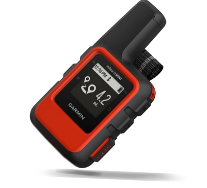
Any questions please call!
+31 416 53 01 41Customer review

